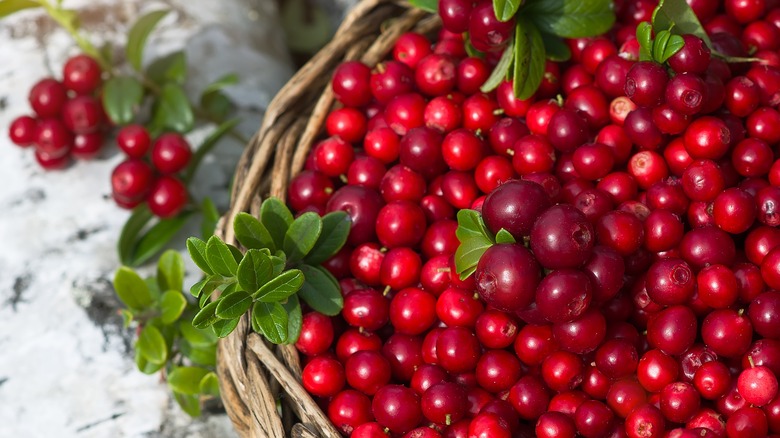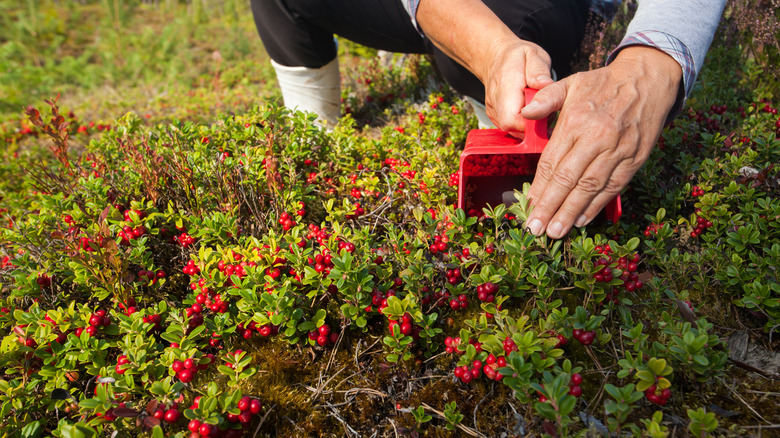The Reason Lingonberries Can Be Difficult To Find
Have you ever tried troll cream? If you live in the U.S., the answer is most likely no. According to Outside Oslo, troll cream is a traditional Norwegian dessert made with sugar, egg whites, and lingonberries. The three ingredients are whipped into a light, fluffy, spoonable pink treat. Although the origins of the name troll cream (also called trollkrem) aren't entirely clear, My Nordic Kitchen explains the name comes from the fact that the lingonberry and the mythological creatures' alleged habitat is in the Scandinavian mountains.
Lingonberries have a tart and slightly sweet flavor that people liken to cranberries. Also, like cranberries, they're commonly made into sauces and jams, according to Medical News Today. If the name is new to you, perhaps you've heard them called by one of their many nicknames: mountain cranberries, foxberries, and cowberries (via Sesquiotica).
We typically can't find them in American grocery stores, and we're missing out, as lingonberries have a variety of nutritional benefits. Medical News Today shares that this superfruit can help lower inflammation, prevent brain aging, and it even has the highest antioxidant content of any berry. Yet while we've caught onto other antioxidant-rich fruits in the U.S., like wild blueberries and goji berries, there is a practical reason lingonberries are hard to find here.
Lingonberries aren't commercially grown in the U.S.
If you're looking to whip up a batch of troll cream, you may have to venture outside the U.S. to get your hands on its defining ingredient. According to The Spruce Eats, lingonberries grow naturally on bushes in Scandinavian forests, and are mostly picked from the wild. If you live in the northern U.S., however, you may be in luck — lingonberries can be found in some forests in the Pacific Northwest, northern Midwest, and New England. But you'll most likely have to forage for them, as lingonberries are not grown in the U.S. on a commercial scale. In fact, One Green World shares that only about 71 acres of land are used to cultivate lingonberries worldwide.
So why is there so much mystery shrouding lingonberry shrubs? Part of the reason may have to do with the fact that lingonberries are picky about where they grow. One Green World explains that they prefer colder climates, bloom in bunches twice a year and only on plants with branches that are a year old. However, once you do have a healthy lingonberry bush, Oregon State University notes that it can produce fruit for at least 20 years. But if you don't live in the northern U.S. and are dying to try this antioxidant-rich fruit, it's worth a shot to visit IKEA in the hopes of finding their organic lingonberry jam.

